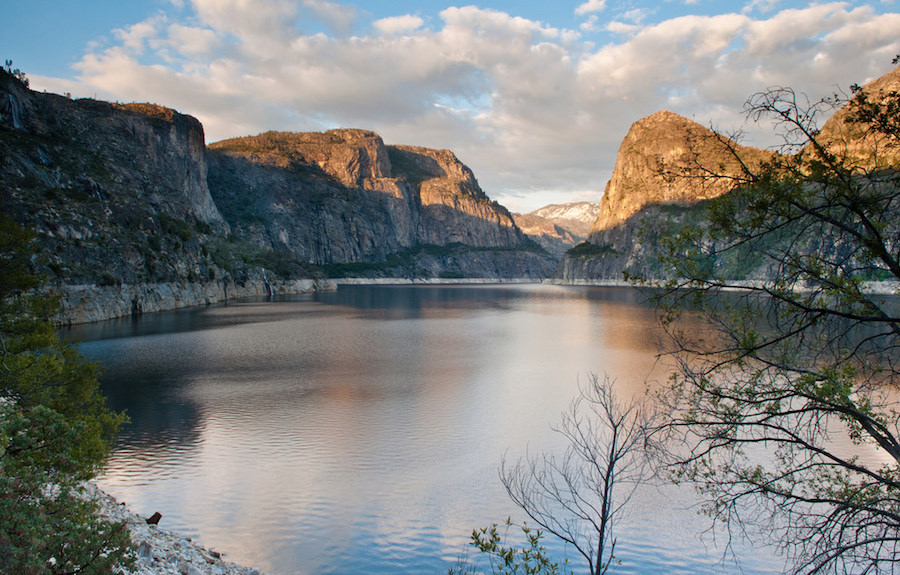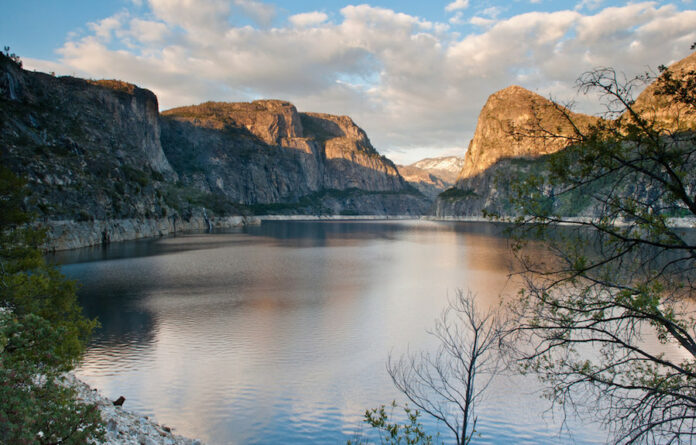
 Have you ever looked out over the Yosemite Valley and thought, “Somebody should cut down all these trees and fill this puppy with water — because I’m thirsty”? No.
Have you ever looked out over the Yosemite Valley and thought, “Somebody should cut down all these trees and fill this puppy with water — because I’m thirsty”? No.
So why do we allow Yosemite’s lost Hetch Hetchy Valley to remain underwater?
John Muir, who fought hard against the O’Shaughnessy Dam that flooded Hetch Hetchy, referred to the valley as the “Tuolumne Yosemite.”
“[A]t a depth of more than 4,000 feet, you see a beautiful ribbon of level ground, with a silver thread in the middle of it, and green or yellow according to the time of year,” Muir wrote. “The opposite wall of the cañon rises in precipices, steep and angular, or with rounded brows like those of Yosemite.”
The “silver thread” Muir referred to is the Tuolumne River, which has supplied drinking water to San Francisco since 1934, and the valley Muir described lies under 300 feet of Sierra water.
The huge environmental loss has done nothing to quell the 100-year controversy sparked by the damming of Hetch Hetchy Valley. Every time conservationists propose a reevaluation of the reservoir, Bay Area voters oppose that reevaluation.
In 2012, San Francisco voted against a study that would evaluate “how to drain the Hetch Hetchy Reservoir so that it can be restored by the National Park Service and identify replacement water and power sources.”
Judge Kevin Seibert in Tuolumne Superior Court rejected a claim made by the Restore Hetch Hetchy group that the reservoir violated a state mandate that water diversions be “reasonable” in 2016.
Yet both of these oppositions occurred during the historic five-year drought in California, before the drought’s state of emergency was lifted in April 2017. Californians are making water conservation a way of life now, and when thinking about sustainability practices and water conservation, Yosemite’s lost Hetch Hetchy Valley comes to mind.
It’s time that Californians reassess our less-than-intelligent drinking water solutions.
Researchers and conservationists say that San Francisco may have options it is refusing to invest in.
“We understand that San Francisco’s water system will need certain improvements and some hydropower will need to be replaced with renewable power,” the Restore Hetch Hetchy group said. “We have done substantial research on these water and power alternatives, but San Francisco appears to need a political or legal imperative to consider these water and power alternatives.”
San Francisco has six water reservoirs. Hetch Hetchy only stores 25 percent of San Francisco’s drinking water, and that water could be diverted outside of the National Park, allowing the valley to be restored.
San Francisco will begin supplementing its drinking water this year with six new wells that will provide the city with an additional 4 million gallons of groundwater per day, proving that the city can be innovative when it needs to be. San Francisco can make changes if it is willing to invest in alternative sources of drinking water.
“This is the first new potable water supply we’ve added to our system since the 1960s. […] This is a significant milestone,” said Paula Kehoe, the director of water resources for the Public Utilities Commission.
San Francisco could research available surface water, following the examples set by Davis and Woodland, which partnered to complete the regional surface water supply project last year. The project diverts surface water from the Sacramento River to provide 85 to 95 percent of the drinking water in Davis and Woodland.
If San Francisco invested in a study to reevaluate the Hetch Hetchy reservoir, it would likely find an answer that conservationists and Bay Area voters could agree on.
Yosemite has 4 million visitors a year. A study from 2011 showed that Yosemite visitors spent $379 million in local communities, and visitor spending impacted the U.S. economy by $30 billion. Another Yosemite valley would only produce even greater revenue for the park. Maybe some of that revenue could help San Francisco find the answer to its water needs.
We have to be smarter and think more progressively about our country’s natural resources. Step one: Realize that Hetch Hetchy reservoir isn’t our best option for drinking water.
Written by: Jessica Driver — jmdriver@ucdavis.edu
Disclaimer: The views and opinions expressed by individual columnists belong to the columnists alone and do not necessarily indicate the views and opinions held by The California Aggie.





